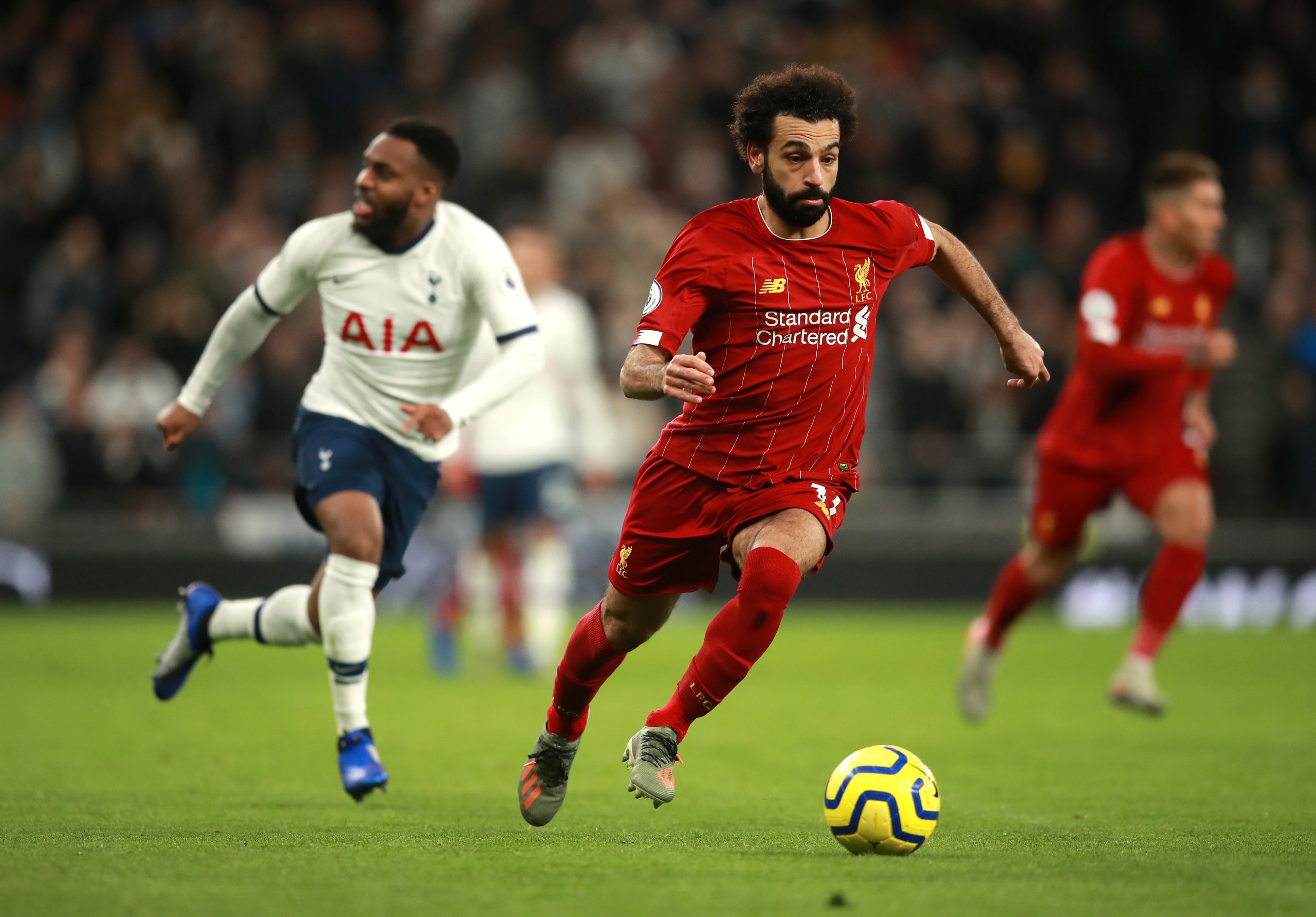Liverpool won again on Saturday. The side went to North London, scored a 37th minute goal, and rode that slim margin all the way to the finish line. It was, by the end of things, a fairly close match. As has so often happened this season though, the fact that Spurs seemed like they were in it didn’t really matter. Liverpool won for the 20th time in 21 Premier League matches, and for the tenth time by a single goal. This particular one goal victory was a classic tale of two halves, with Liverpool dominating in the opening period and Spurs pushing for, but never quite finding, an equalizer in the second half. As always with matches of this particular flavor the question of what, if anything, tangibly changed between the halves is important. Buried in the change are answers to questions about exactly how enthused Spurs should be about a chase that ultimately proved unfruitful, and whether there is anything at all to cause concern about Liverpool’s curious habit of allowing teams to linger. When it was all said and done, the numbers were fairly even. Liverpool ended with 1.89 expected goals to Spurs, 1.71. Spurs had 14 shots to Liverpool’s 13. This is, of course, colored by the fact that Liverpool had the lead for a substantial portion of the match, and if you’re playing a team even, while winning on the scoreboard, that’s generally going to bring home the points. But, as the race chart shows the pattern of this game was not that it was even throughout. First Liverpool dominated, then Spurs came roaring, or at least barking at a moderate volume, back. 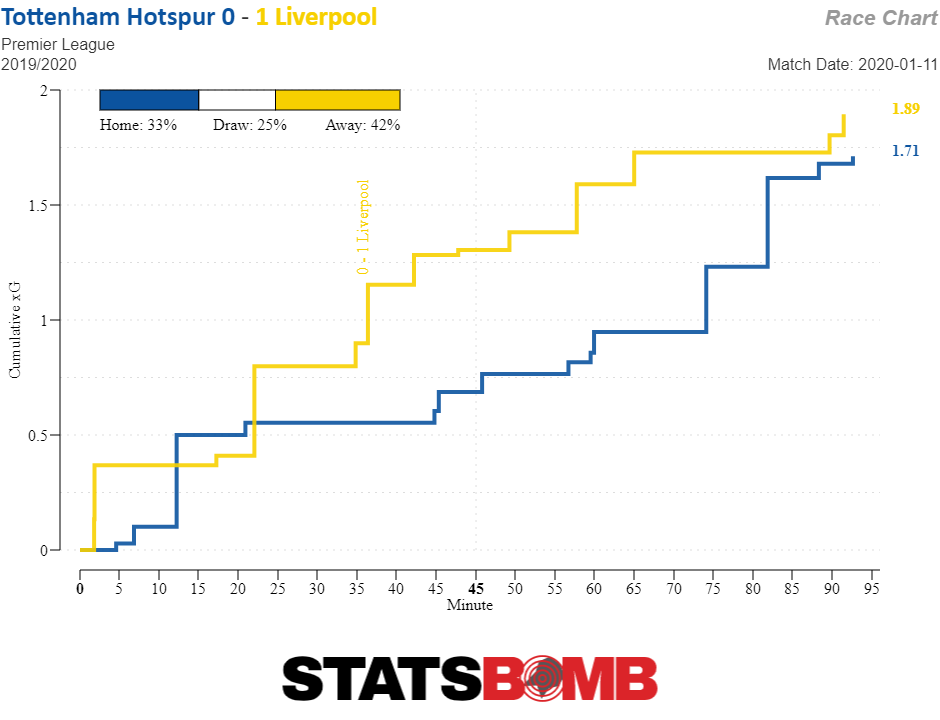 So, what changed? It’s often easy to understand when the rhythm of a match shifts, one team’s attacks seem more dangerous, the other’s stop happening altogether. It’s easy to see the end result of those shifts as well. In this case we can see that Spurs started creating more, and Liverpool’s chances dried up. Jurgen Klopp’s men had exactly one chance between the 59th and 90th minute. But what is it that’s actually changing pass to pass, decision to decision that creates those shifts. Let’s dig into those number. A good first place to start is the basic passing maps. Do they show any major differences between the halves for the two teams. Here’s Liverpool’s first half compared to their second.
So, what changed? It’s often easy to understand when the rhythm of a match shifts, one team’s attacks seem more dangerous, the other’s stop happening altogether. It’s easy to see the end result of those shifts as well. In this case we can see that Spurs started creating more, and Liverpool’s chances dried up. Jurgen Klopp’s men had exactly one chance between the 59th and 90th minute. But what is it that’s actually changing pass to pass, decision to decision that creates those shifts. Let’s dig into those number. A good first place to start is the basic passing maps. Do they show any major differences between the halves for the two teams. Here’s Liverpool’s first half compared to their second. 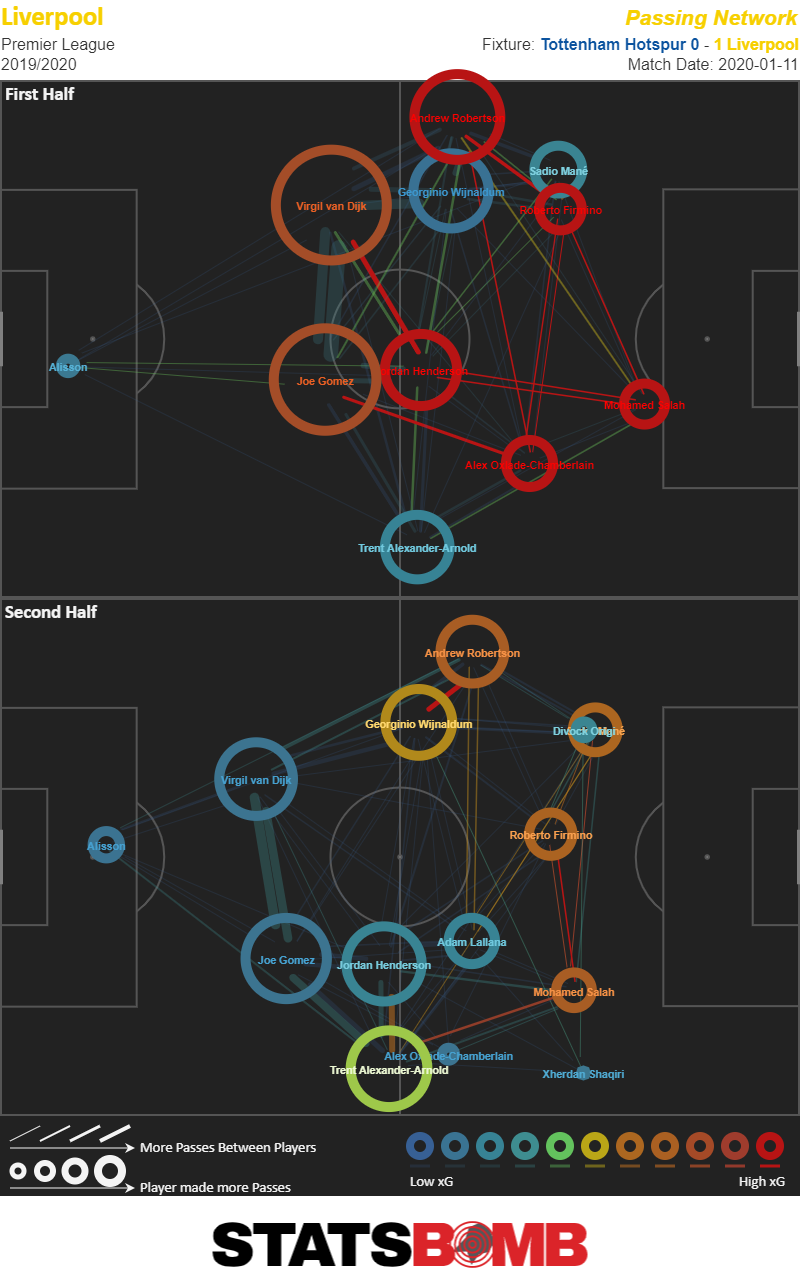 There are some minor differences between the halves for sure. Notably the connection between Virgil van Dijk and Jordan Henderson is severed and buildup play is consequently forced wider on all accounts. But still, the basic shape remains the same, it’s the color that’s changed. In other words the same shape is producing less in terms of xG. That doesn’t tell us much that we didn’t know before. Now, let’s look at the Spurs side.
There are some minor differences between the halves for sure. Notably the connection between Virgil van Dijk and Jordan Henderson is severed and buildup play is consequently forced wider on all accounts. But still, the basic shape remains the same, it’s the color that’s changed. In other words the same shape is producing less in terms of xG. That doesn’t tell us much that we didn’t know before. Now, let’s look at the Spurs side. 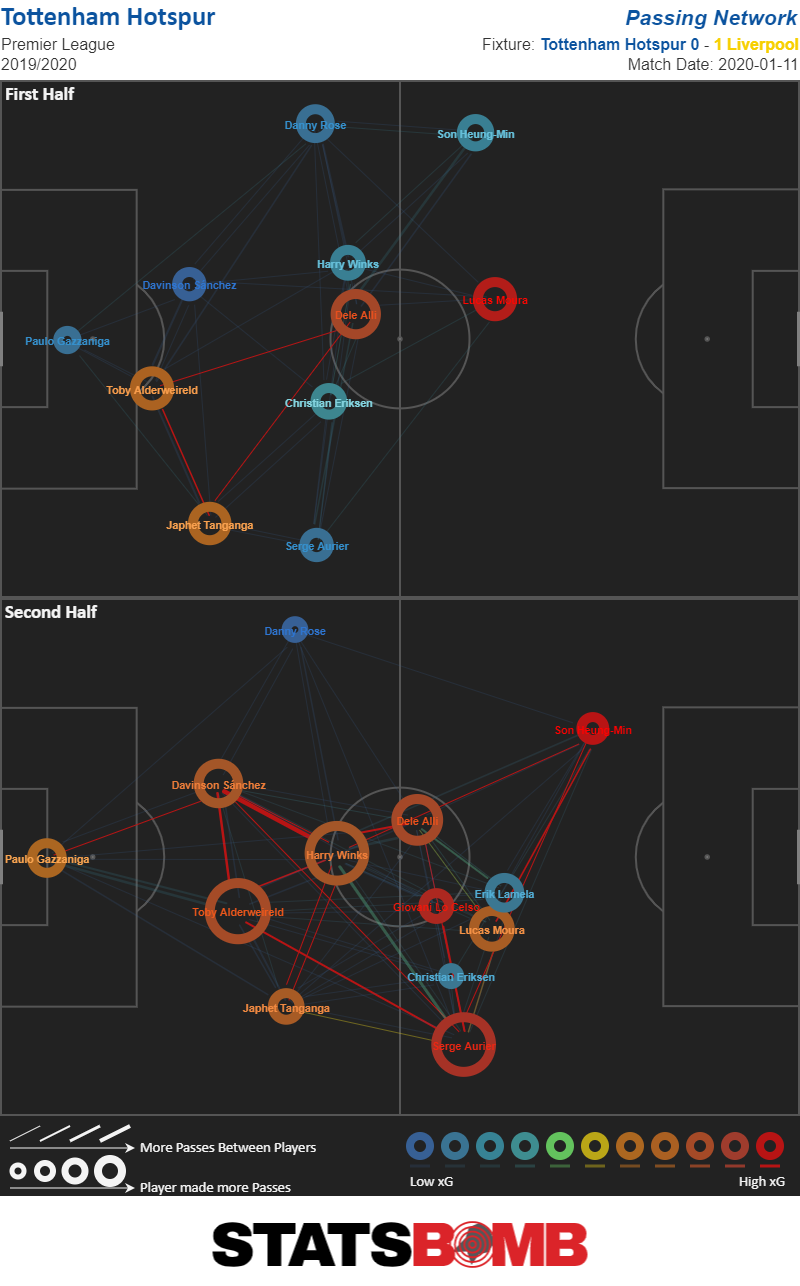 Now this is a little different. In the first half Dele Alli and Harry Winks are both getting the ball off the center backs. In the second half that responsibility seems to become solely Winks’s. In the first half Son is almost exclusively receiving the ball from the midfielders, and getting it much deeper, while in the second half he’s getting it from other forwards and as a consequence seems to be a much more dangerous threat. There’s another way to visualize this as well. In an individual match we can just look at all the passes a team played and see if splitting them up half to half shows us anything. Here we see Liverpool’s passing in the first half (red for complete, yellow for incomplete). Looking at Liverpool’s first half we see more or less what we’d expect from this side. The team is works the ball from side to side, moves it up the flanks and enters the box.
Now this is a little different. In the first half Dele Alli and Harry Winks are both getting the ball off the center backs. In the second half that responsibility seems to become solely Winks’s. In the first half Son is almost exclusively receiving the ball from the midfielders, and getting it much deeper, while in the second half he’s getting it from other forwards and as a consequence seems to be a much more dangerous threat. There’s another way to visualize this as well. In an individual match we can just look at all the passes a team played and see if splitting them up half to half shows us anything. Here we see Liverpool’s passing in the first half (red for complete, yellow for incomplete). Looking at Liverpool’s first half we see more or less what we’d expect from this side. The team is works the ball from side to side, moves it up the flanks and enters the box. 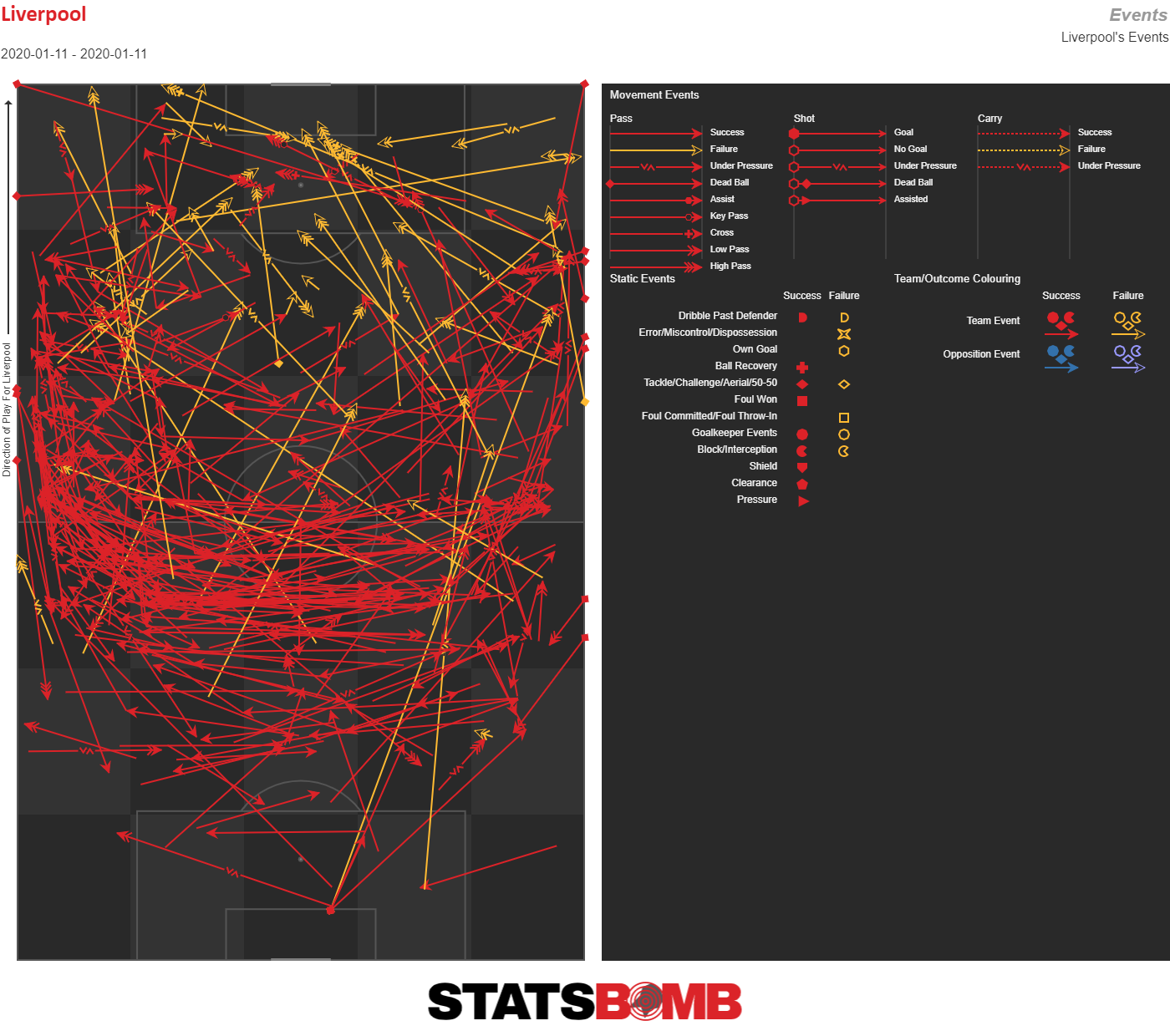 And we see basically the same trend in the second half. This is how Liverpool play. This leaves us still looking for answers about why exactly it is that their attack dried up. The team, broadly, tried to do the same things, it just didn’t work as well.
And we see basically the same trend in the second half. This is how Liverpool play. This leaves us still looking for answers about why exactly it is that their attack dried up. The team, broadly, tried to do the same things, it just didn’t work as well. 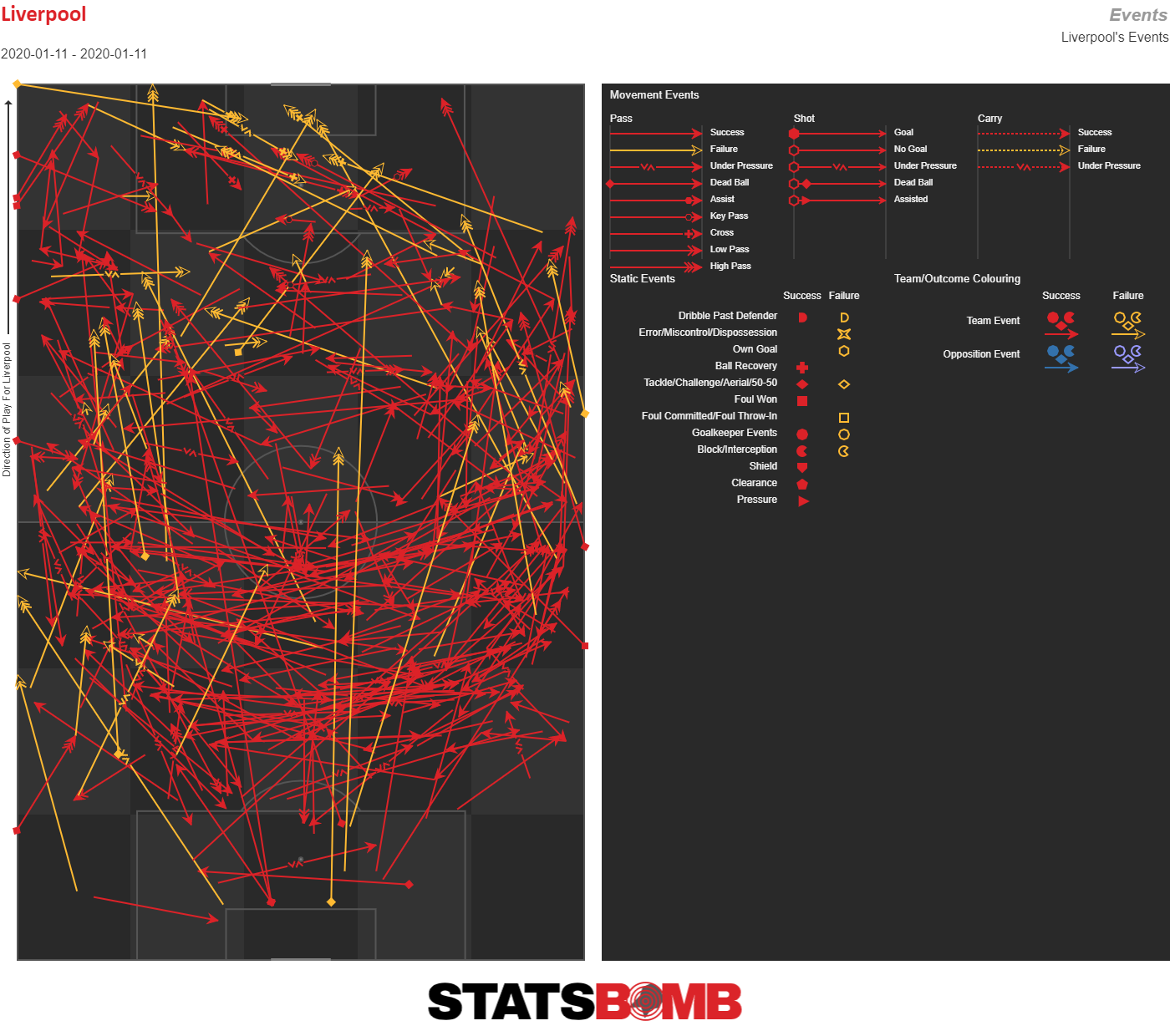 Spurs on the other hand, show a remarkably different pattern of play in the first and second half. Here, in the first half we see a team that is just totally unable to get out of their own half. They show a slight preference for launching the ball long and up the left side, presumably trying to get Son in behind, but mostly this is just futility.
Spurs on the other hand, show a remarkably different pattern of play in the first and second half. Here, in the first half we see a team that is just totally unable to get out of their own half. They show a slight preference for launching the ball long and up the left side, presumably trying to get Son in behind, but mostly this is just futility. 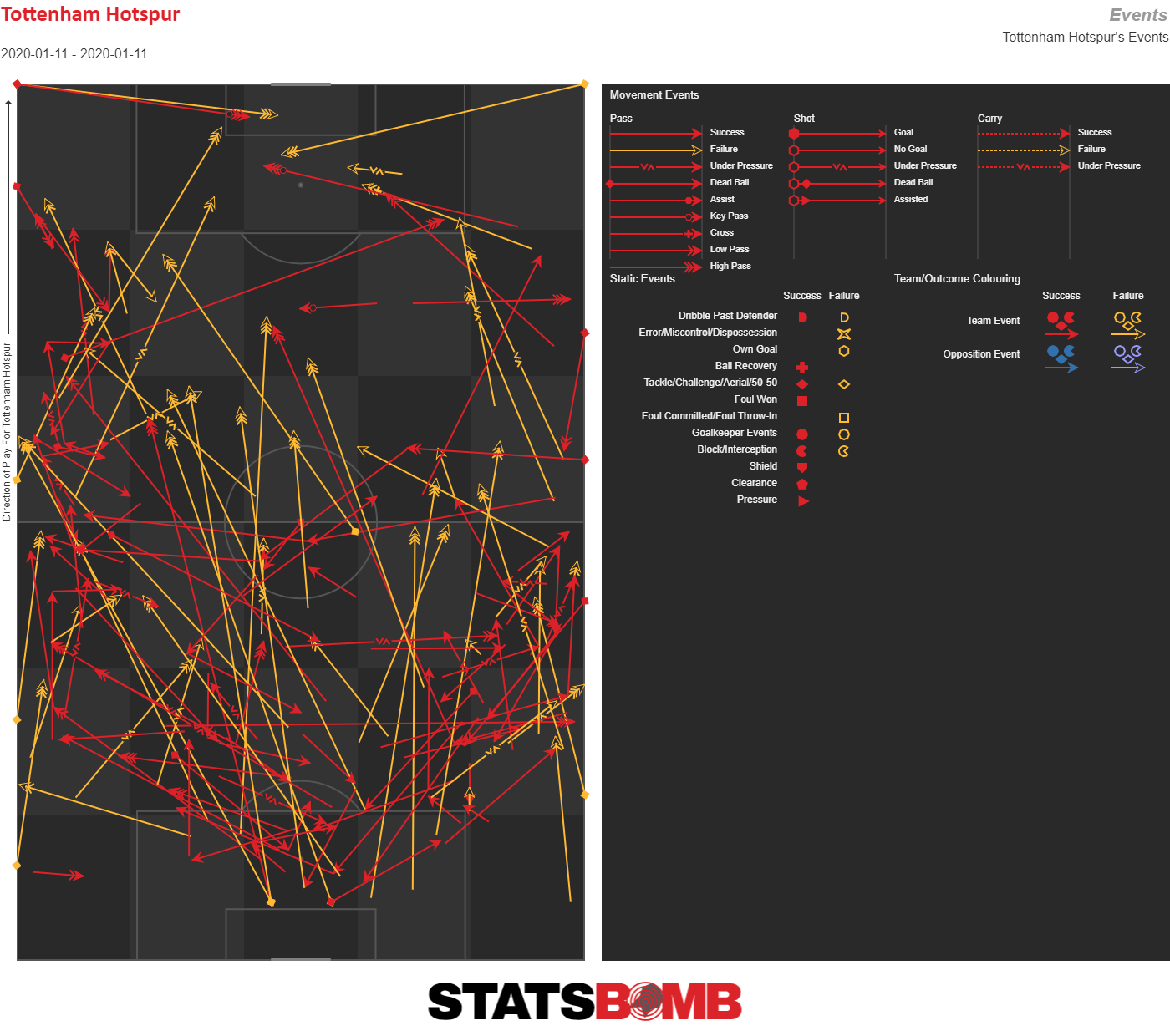 The second half is simply a different story. Instead of attacking the left, Spurs seem to find joy attacking on the right side. Somewhat paradoxically this brought Son into the game. Rather than receiving the ball wide on the flank in relatively isolated positions, like he did in the first half, he was able to received the ball in areas across the pitch, and deeper in Liverpool territory. It’s also worth noting that during the second half Giovanni Lo Celso came onto the pitch for Christian Ericksen and his presence, largely starting from the right side of midfield also likely made an impact.
The second half is simply a different story. Instead of attacking the left, Spurs seem to find joy attacking on the right side. Somewhat paradoxically this brought Son into the game. Rather than receiving the ball wide on the flank in relatively isolated positions, like he did in the first half, he was able to received the ball in areas across the pitch, and deeper in Liverpool territory. It’s also worth noting that during the second half Giovanni Lo Celso came onto the pitch for Christian Ericksen and his presence, largely starting from the right side of midfield also likely made an impact. 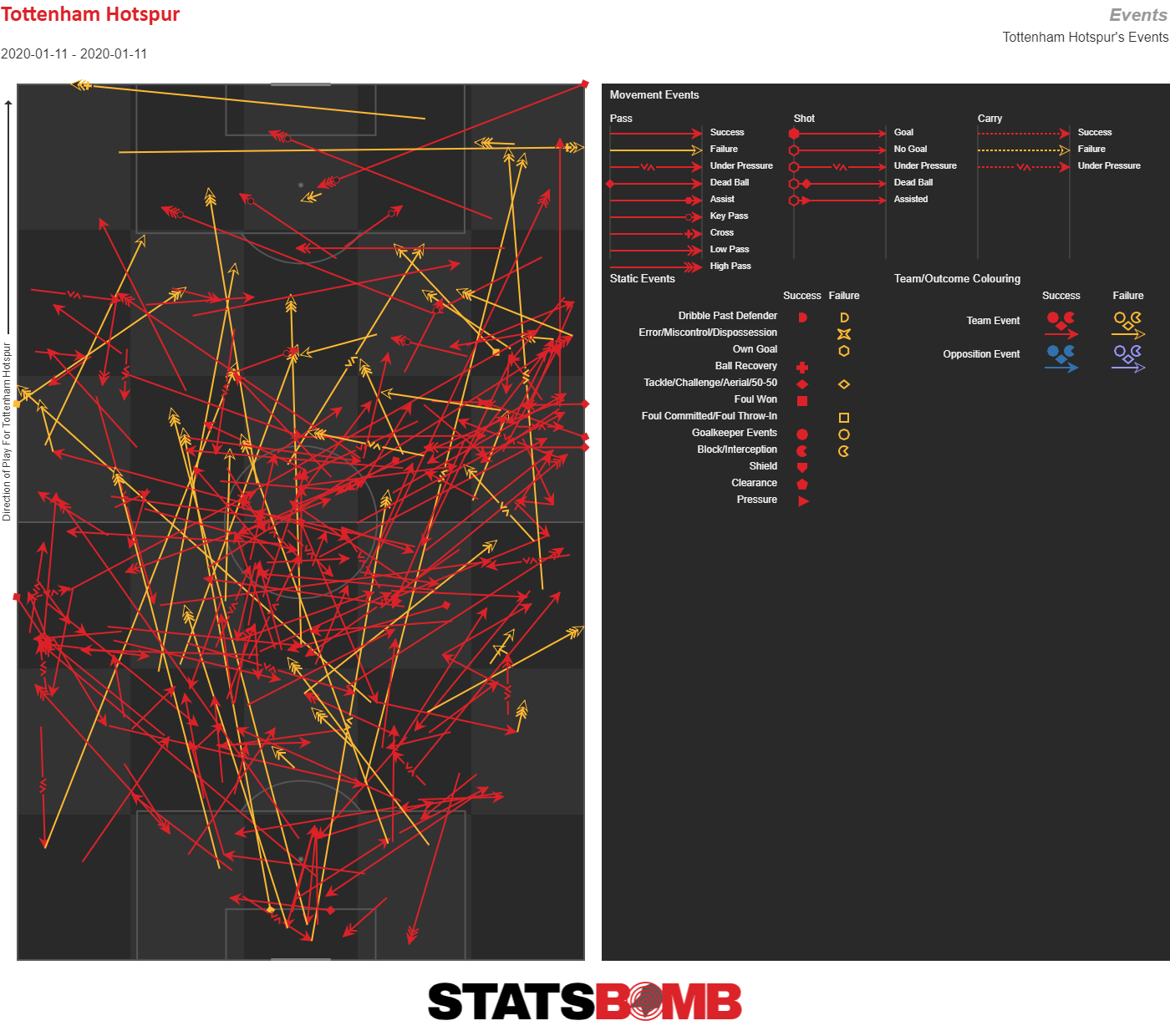 So that’s one mystery solved. Spurs attacked differently in the second half and it worked better. But that still leaves the Liverpool mystery. What was it exactly that resulted in their attack dropping from eight shots to five shots and 1.34 xG to 0.59? The answer, unsatisfying as it may be, is not a whole heck of a lot. The shot maps look the same, the passing numbers look the same, all of the open play figures you can find look the same. And that’s because for all intents and purposes, from open play Liverpool’s attack was almost exactly the same in the first half as it was in the second half. In the first half the team had six open play shots for 0.70 xG, or an xG per shot of 0.116. In the second half, the team had five open play shots for 0.59 xG, or an xG per shot of 0.118. One shot of difference is not exactly a tale of two halves. The major difference is that in the first half Liverpool created two set pieces shots worth a combined 0.64 xG. There was, of course, the goal which came from a passage of play that started with a throw-in and then then a Van Dijk header. That’s it, that’s the list. The match between Liverpool and Spurs encapsulates the challenges of understanding the ebbs and flows of a football match. Sometimes what seems like a tale of two halves really is. Spurs attack really did change from the first half to the second half, and that in turn changed the match in tangible ways. But, on the other side of the ball, there wasn’t much difference half to half. Liverpool played the same way, had roughly the same amount of success moving the ball, and simply happened to create both of their strong set piece chances in the first half. There wasn’t anything systemic about it. Sometimes the narrative is real, and sometimes it’s a figment of the randomness of the universe. And sometimes it’s both in the same game. Header image courtesy of the Press Association
So that’s one mystery solved. Spurs attacked differently in the second half and it worked better. But that still leaves the Liverpool mystery. What was it exactly that resulted in their attack dropping from eight shots to five shots and 1.34 xG to 0.59? The answer, unsatisfying as it may be, is not a whole heck of a lot. The shot maps look the same, the passing numbers look the same, all of the open play figures you can find look the same. And that’s because for all intents and purposes, from open play Liverpool’s attack was almost exactly the same in the first half as it was in the second half. In the first half the team had six open play shots for 0.70 xG, or an xG per shot of 0.116. In the second half, the team had five open play shots for 0.59 xG, or an xG per shot of 0.118. One shot of difference is not exactly a tale of two halves. The major difference is that in the first half Liverpool created two set pieces shots worth a combined 0.64 xG. There was, of course, the goal which came from a passage of play that started with a throw-in and then then a Van Dijk header. That’s it, that’s the list. The match between Liverpool and Spurs encapsulates the challenges of understanding the ebbs and flows of a football match. Sometimes what seems like a tale of two halves really is. Spurs attack really did change from the first half to the second half, and that in turn changed the match in tangible ways. But, on the other side of the ball, there wasn’t much difference half to half. Liverpool played the same way, had roughly the same amount of success moving the ball, and simply happened to create both of their strong set piece chances in the first half. There wasn’t anything systemic about it. Sometimes the narrative is real, and sometimes it’s a figment of the randomness of the universe. And sometimes it’s both in the same game. Header image courtesy of the Press Association
2020
Tottenham Hotspur vs Liverpool: A complicated tale of two halves
By Kevin Lawson
|
January 14, 2020
